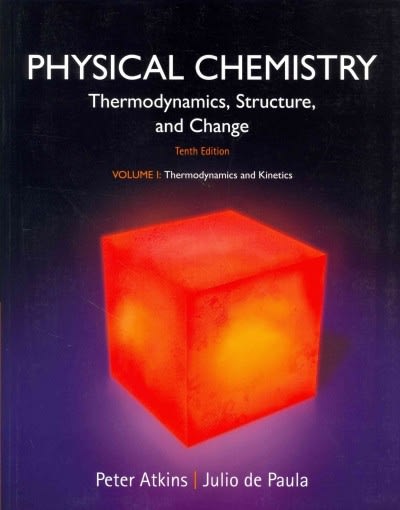Conventional equilibrium considerations do not apply when a reaction is being driven by light absorption. Thus the
Question:
Conventional equilibrium considerations do not apply when a reaction is being driven by light absorption. Thus the steady-state concentration of products and reactants might differ significantly from equilibrium values. For instance, suppose the reaction A→B is driven by light absorption, and that its rate is Ia, but that the reverse reaction B→A is bimolecular and second order with a rate kr[B]2. What is the stationary state concentration of B? Why does this ‘photostationary state’ differ from the equilibrium state?
Fantastic news! We've Found the answer you've been seeking!
Step by Step Answer:
Related Book For 

Physical Chemistry Thermodynamics And Kinetics
ISBN: 9781464124518
10th Edition
Authors: Peter Atkins, Julio De Paula
Question Posted:





